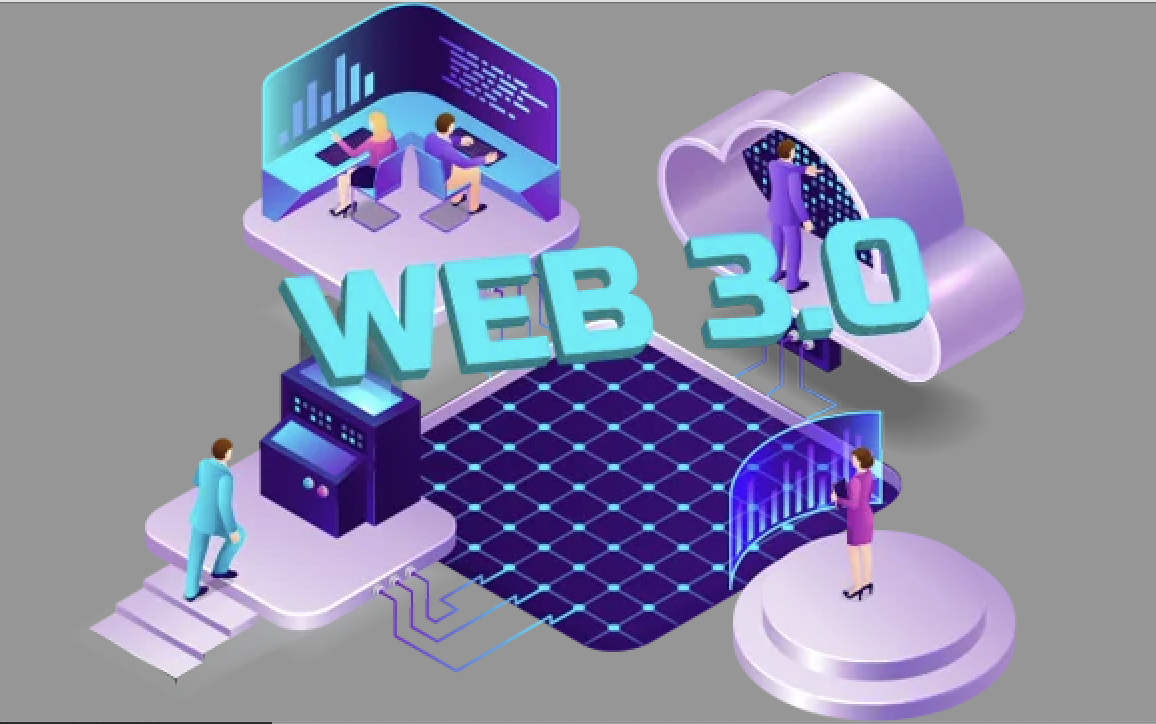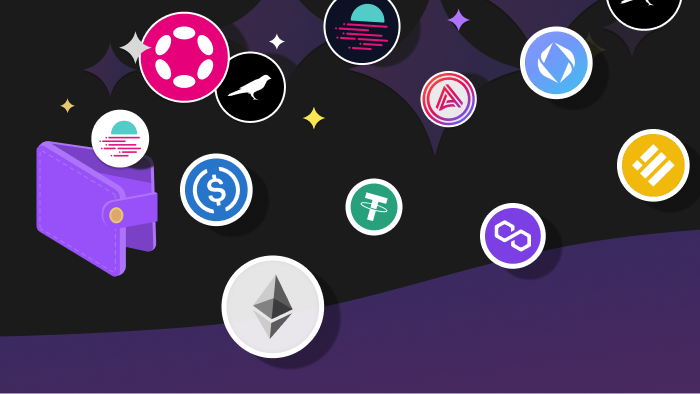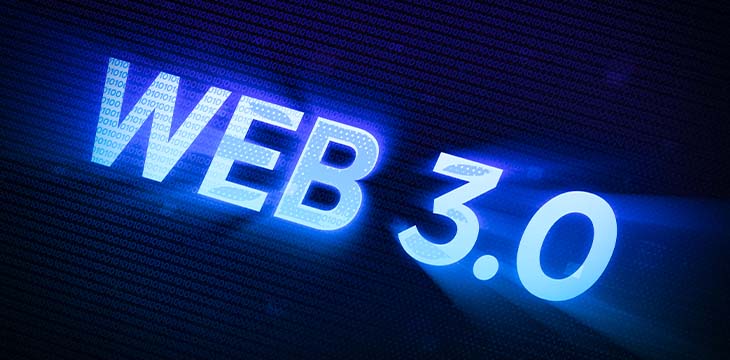Introduction: The Allure and Risks of Futures
We're living in an exciting era; the Internet's next revolution, Web3, is quietly unfolding. You might be used to the traditional internet (Web2), controlled by a few tech giants (like Google, Facebook, Amazon) who manage your data, content, and digital identity. But Web3 is disrupting this model, promising to shift power from centralized platforms back to the user.
For many, Web3 sounds mysterious and complex, filled with new concepts like blockchain, cryptocurrency, and NFTs. Don't worry! This Web3 Beginner's Guide will clear the fog, explaining the core ideas of Web3, how it differs from the Web2 we know, and why it's so important for your digital life. Ready? Let's take your first step into the decentralized internet of Web3!
I. Futures Risk Analysis: Why It's High-Risk
To grasp the revolutionary nature of Web3, we first need to place it within the grand narrative of internet evolution.
1.Web1.0: The Read-Only Internet
-
Era: Roughly mid-1990s to early 2000s.
-
Characteristics: The early stage of the internet, primarily static web pages. Users were mainly consumers of information, Browse content through portals, with very limited interaction.
-
Core: Information presentation.
2.Web2.0: The Read-Write Internet, a Centralized Walled Garden
-
Era: Mid-2000s to present.
-
Characteristics: Emphasizes User-Generated Content (UGC) and high interactivity. Social media (like Facebook, Twitter), video platforms (YouTube), and e-commerce (Amazon, Alibaba) flourished. Users actively participated in creating, sharing, and interacting with content.
-
Core: Social interaction and platform economy.
-
Hidden Problem: Despite users creating immense value, data and power became highly concentrated in the hands of a few internet giants. These centralized platforms controlled vast amounts of user data, dictated content distribution rules, could easily censor or block content, and deprived users of true ownership over their digital assets (like gaming accounts, virtual currency) created on these platforms. Your digital footprint and personal privacy were largely not your own. This is the core contradiction of the Web2 model.
3.Web3.0: The Read-Write-Own Internet, the Decentralized Future of Web3
-
Era: Currently emerging, driven by blockchain and cryptography.
-
Characteristics: The core philosophy of Web3 is decentralization and user ownership. It aims to leverage technology to allow users to truly own and control their data, digital identity, and digital assets. Web3 strives to build a more open, transparent, trustless internet, governed collectively by its users.
-
Core: User ownership and decentralized governance.
-
Fundamental Change: Web3 directly addresses the shortcomings of Web2's centralization, seeking to shift control from a few platforms to a broader base of users and communities, allowing everyone to benefit from the value they create. Web3 is not just a technological iteration; it's a paradigm shift in philosophy.
| Feature | Web1.0 (Read-Only) | Web2.0 (Read-Write) | Web3.0 (Read-Write-Own) |
| Core Idea | Information Presentation | Social Interaction & Platform Economy | User Ownership & Decentralized Governance in Web3 |
| Control | Portals, Information Providers | Internet Giants (Platforms) | Users & Communities Collectively Own |
| Data | Static Data | User Data Owned by Platforms | Users Own & Control Their Own Data in Web3 |
| App Type | Portals, Static Blogs | Social Media, E-commerce, Content Platforms | Decentralized Applications (dApps), DAOs, NFTs, Metaverse |
| Revenue Model | Advertising, Subscriptions | Advertising, Data Sales, Service Fees | Tokenomics, User Participation Incentives in Web3 |
| Keywords | Portals, Static, Information | Social, UGC, Cloud Services, Data Monopoly | Decentralization, Blockchain, Crypto, Ownership, Trust-Minimization |
II. Core Futures Risk Control Strategies
To understand Web3, you need to grasp some core concepts. These are the foundational building blocks of the decentralized internet of Web3.
1.Blockchain: The Skeleton of Web3
-
Imagine a blockchain as a decentralized public ledger. It consists of "blocks" linked together chronologically, forming a "chain."
-
Characteristics:
-
Decentralized: No central server; data is distributed across all participants (nodes) in the network, making Web3 robust.
-
Transparent: All transaction records are publicly viewable.
-
Immutable: Once information is recorded on the blockchain, it's extremely difficult to alter or delete.
-
Highly Secure: Data security is ensured through cryptographic techniques, a cornerstone of Web3.
-
-
Function: Provides a secure, transparent, and trustless underlying infrastructure for Web3 applications.
3.Cryptocurrency: The Blood of Web3
-
Role in Web3:
-
Value Transfer: Enables peer-to-peer value transfer globally without intermediaries like banks.
-
Incentive Mechanism: Rewards participants for maintaining the network (e.g., miners or validators), essential for Web3 functionality.
-
Governance Rights: Certain tokens (governance tokens) grant holders voting and decision-making rights over decentralized projects, fostering Web3 community ownership.
-
4.Decentralized Applications (dApps): The Programs of Web3
-
dApps are Decentralized Applications. Unlike traditional apps running on centralized servers, dApps' backend code and data are stored on a blockchain, embodying the spirit of Web3.
-
Characteristics:
-
Censorship-Resistant: No single entity can arbitrarily shut them down or control them.
-
Transparent: Code is open-source and auditable by anyone, a key aspect of Web3.
-
Autonomous: Once deployed, they execute automatically based on smart contract code.
-
-
Examples: Decentralized Exchanges (DEXs), Web3 games, decentralized social media, all part of the expanding Web3 landscape.
5.Non-Fungible Tokens (NFTs): The Unique Assets of Web3
-
Function: To prove unique ownership in the digital world. An NFT can represent digital art, game items, virtual land, digital identities, music, and more, making them vital to Web3.
-
Core: Grants digital content scarcity and ownership.
6.Decentralized Finance (DeFi): The Financial Future of Web3
-
DeFi is Decentralized Finance. It aims to use blockchain and smart contracts to build a financial system without traditional intermediaries like banks or brokers, a revolutionary part of Web3.
-
Services: Offers financial services like lending, borrowing, trading, insurance, and yield farming, all conducted transparently on-chain.
-
Core: Open, transparent, and programmable financial services in Web3.
7.Decentralized Autonomous Organizations (DAOs): The New Governance Model of Web3
-
DAO is Decentralized Autonomous Organization. It's a new type of organization jointly owned and managed by its community members, operating through rules encoded in smart contracts, a defining characteristic of Web3.
-
Characteristics: Decision-making processes are transparent, with members voting by holding governance tokens.
-
Core: Community-driven, code-governed, flat management structure in Web3.
III. Trading Plan & Journal: Systematizing Risk Control

Now that you understand the core concepts of Web3, you might be wondering what it can actually offer you.
1.Data Ownership Returns to Your Hands
-
In Web2, your data (photos, chat logs, spending habits) belonged to the platforms. Web3, through blockchain technology, allows you to truly own and control your own data. You decide who can access your data and whether you profit from it.
-
Core: "Your data, your control" in Web3.
2.Enhanced Privacy Protection
-
The decentralized nature of Web3 reduces reliance on centralized servers, thereby lowering the risk of personal data being massively collected and misused. Your identity can be validated based on cryptographic techniques, not reliant on large corporations, boosting Web3 privacy.
-
Core: Stronger privacy control and digital identity autonomy in Web3.
3.Censorship Resistance and Openness
-
Web3 applications run on decentralized networks, meaning no single controlling entity can easily shut them down or censor content. This offers stronger protection for free speech and information dissemination, a vital promise of Web3.
-
Core: Decentralized power, open and free.
4.Value Capture and New Economic Models
-
In Web3, as a participant and builder of the network, you can directly receive economic rewards by holding tokens, providing services, or creating content. For example, "Play-to-Earn" Web3 games allow players to truly own in-game assets and profit from them.
-
Core: Participation equals value, co-creation, and sharing in Web3.
5.Global Accessibility and Financial Inclusion
-
Web3 services, especially DeFi, do not rely on traditional financial institutions. This means that wherever you are, as long as you have an internet connection, you can participate in global financial services. This offers unprecedented financial inclusion, particularly for the unbanked, a powerful aspect of Web3.
-
Core: Borderless and inclusive access within Web3.
IV. Capital Management: Long-Term Futures Strategies
Web3 isn't a single technology but a vast and rapidly evolving ecosystem composed of various innovative technologies and applications.
1.Underlying Public Chains: These are the infrastructure of Web3, providing platforms to run dApps and crypto assets. For example, Ethereum is the earliest and most prominent smart contract platform, alongside Solana, Polygon, BNB Chain, and others. Each has its characteristics, jointly supporting the operation of the Web3 world.
2.Upper-Layer Applications: The Prosperity of dApps
-
Decentralized Finance (DeFi): Lending protocols, Decentralized Exchanges (DEXs), stablecoins, etc., form the financial core of Web3.
-
Decentralized Social (SocialFi): Explores how to return social media data ownership to users and incentivize content creators in Web3.
-
Gaming (GameFi): Combines NFTs and "Play-to-Earn" models, allowing players to own in-game assets and monetize them, a growing part of Web3.
-
Metaverse: Virtual worlds where land, identity, and goods are all represented by NFTs, owned and freely tradable by users, a frontier for Web3.
-
Decentralized storage, Decentralized Identity (DID), and more are continuously improving the various infrastructures of Web3.
3.Connecting Tools: Web3 Wallets
-
This is your gateway to the Web3 world. Through a wallet, you can manage cryptocurrencies, NFTs, and interact with dApps. A secure Web3 wallet is your entry point for all operations in the decentralized world.

Conclusion: Futures Trading, Risk Control is King
Congratulations, you've taken your first step into exploring the Web3 world! From understanding its core concepts to grasping its differences from the traditional internet, you're building a solid foundation for embracing the future of the digital world.
Web3 is a field with infinite potential. It will reshape how we interact with the digital world, own assets, and collaborate within communities. Although it's still in its early stages and full of challenges and opportunities, its core principles of decentralization and user ownership herald a more open, fair, and user-driven internet era.
As a beginner, understanding Web3 is key, but more importantly, maintain curiosity and keep learning. Explore bravely, participate gradually, and you'll become a witness and participant in this digital revolution. The future of Web3 is shaped by us, together!














